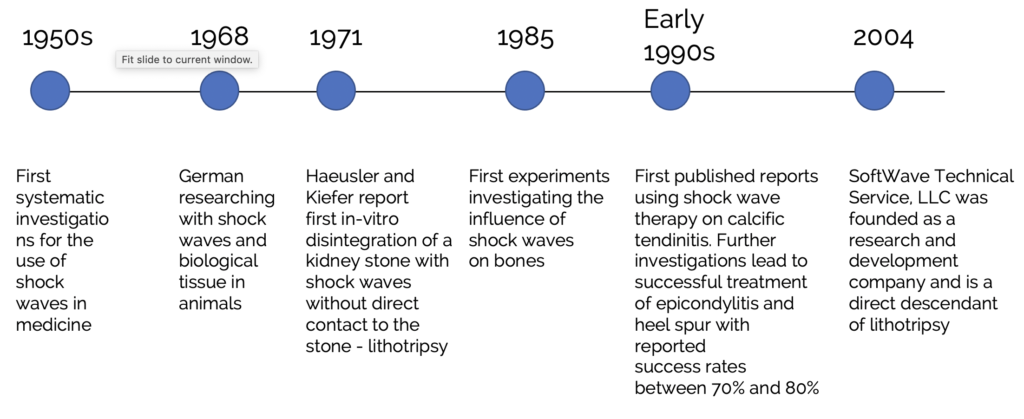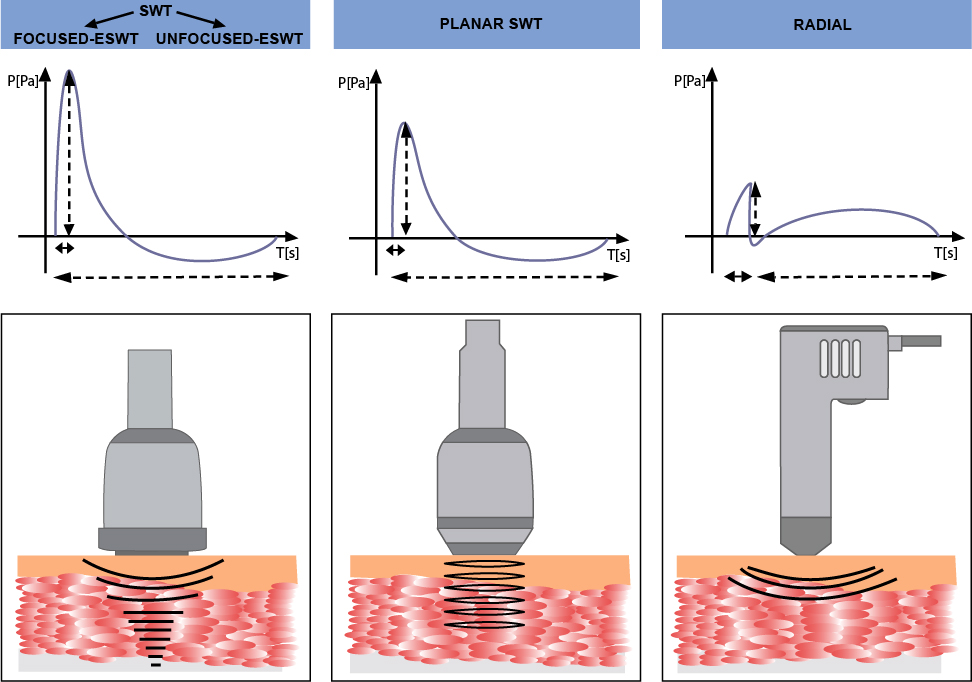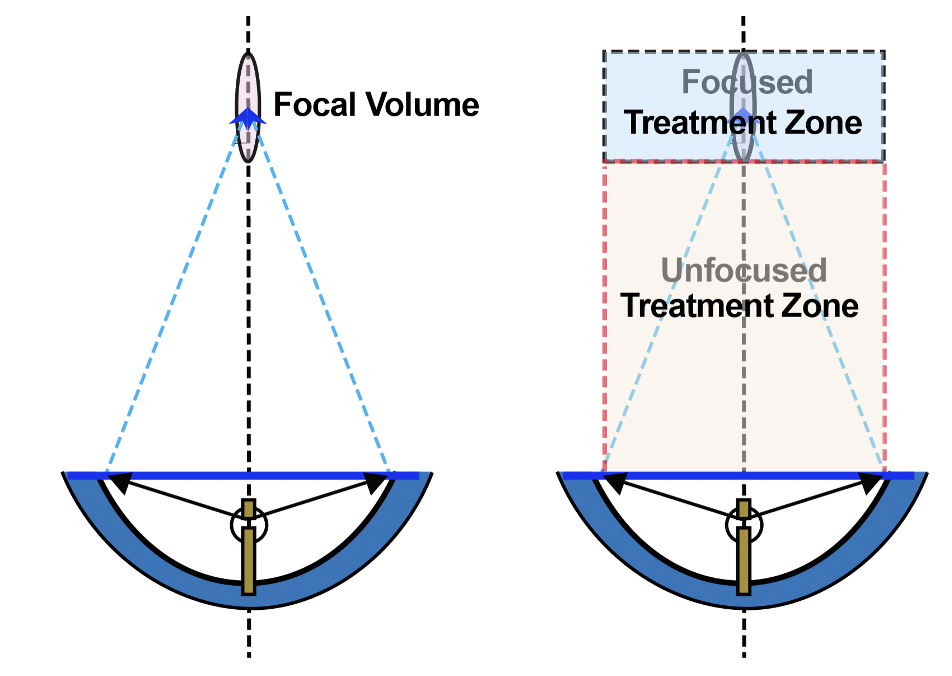SHOCKWAVE THERAPY
- Home
- Shockwave Therapy
Shockwave Therapy in Canada | Effective Treatment for Pain Relief
Shockwave therapy is a revolutionary, non-invasive treatment designed to alleviate pain and promote faster recovery. At SoftWave Therapy Canada, we specialize in providing advanced shockwave therapy to treat joint pain, sports injuries, and chronic conditions. This innovative treatment enhances your body’s natural healing process, ensuring effective and long-lasting results.
Don’t let pain hold you back, experience the benefits of shockwave therapy today! Contact us to schedule your consultation and start your journey toward recovery.
What is a shock wave?
Shock waves are acoustic pulses with high positive pressure, fast and steep rise time followed by comparatively small negative pressure (tensile wave).
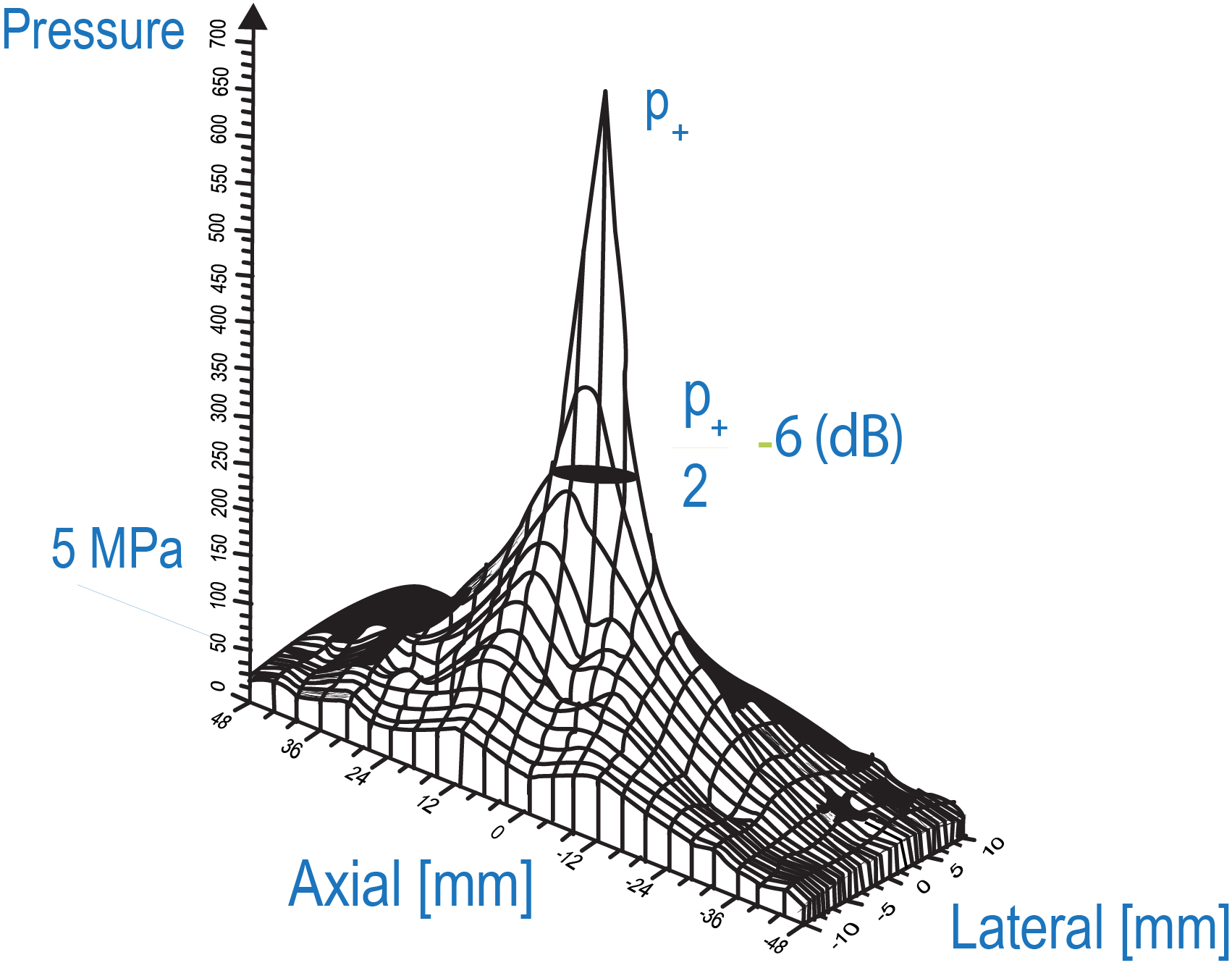
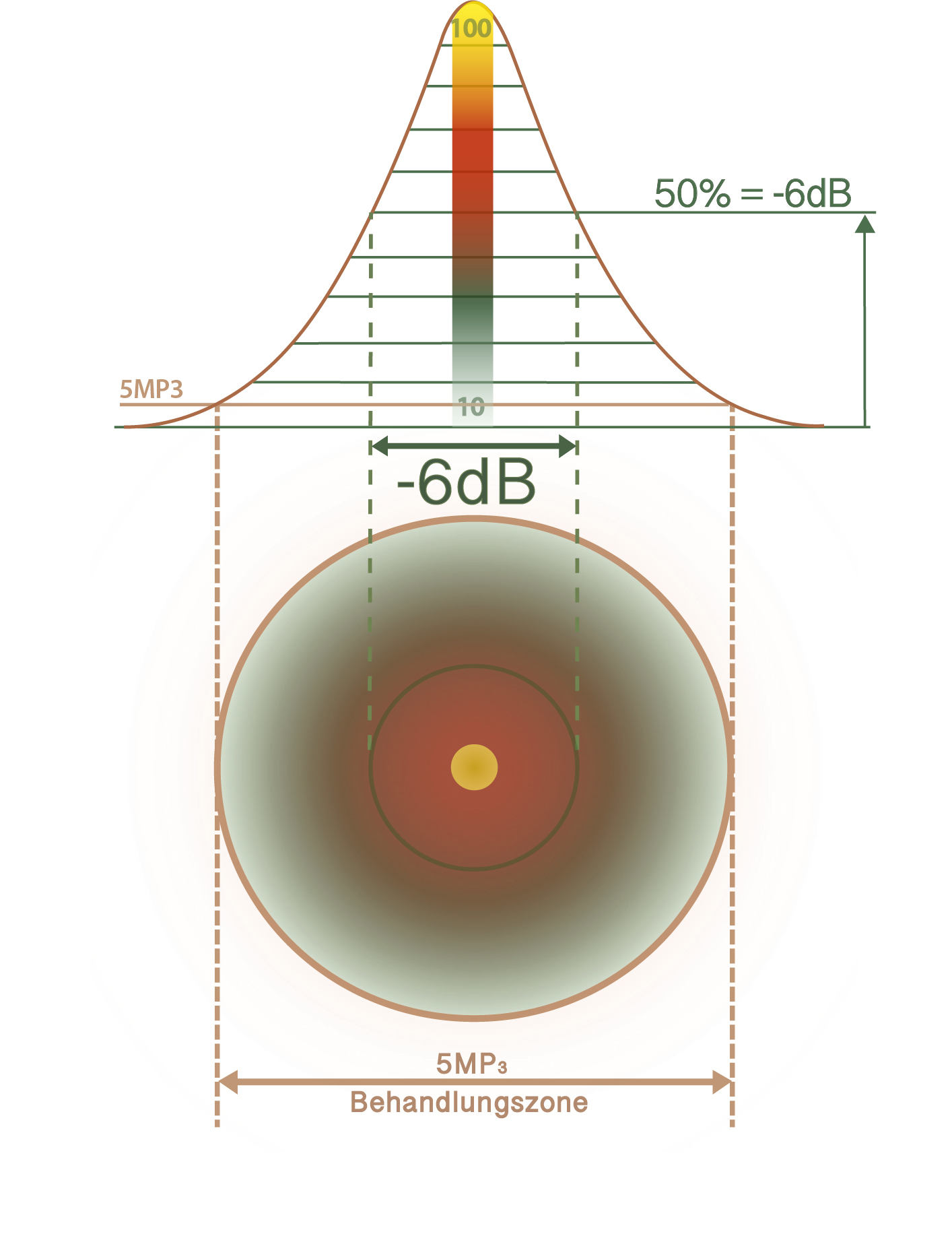
Shock waves in nature
Shock waves surround everyday life. They are generated by supersonic aircraft, explosions, lightning, earthquakes or other phenomena that create violent changes in pressure. Shock waves differ from sound waves in that the wavefront, in which compression takes place, is a region of sudden and violent change in stress, density, and temperature. Shock waves travel faster than sound and their speed increases as the amplitude are raised.
Below is an example of a shock wave in nature. The pistol shrimp use their shockwaves to protect their mates. Watch how its claw opens and shuts to fire off a powerful water jet at speeds up to 30 metres per second (67 mph). Note, the high-speed water isn’t what harms its target – it’s the resulting shock wave.
Researchers have measured its sound. At a volume of about 200 decibels, it’s louder than a .22 calibre rifle shot. The pistol shrimp pops are some of the loudest in the ocean, second only to sperm whale clicks.
What is Shockwave Therapy?
Shockwave Therapy, or Extracorporeal Shockwave Therapy (EWST), is a non-invasive treatment that involves the delivery of shock waves to an injured area to promote healing. This treatment produces highly effective shock waves that initiate biological regeneration processes at the cellular level.
Treatment involving technology that applies short, frequent, and high intensity bursts of mechanical energy (in the form of a shockwave) into soft-tissue that is injured, scarred, or contains adhesions, is painful, or inflamed.
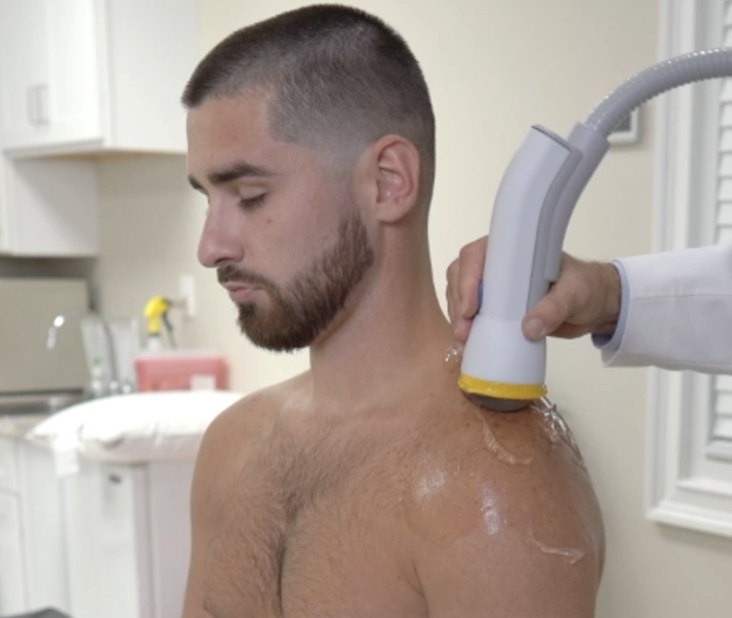
Mechanotransduction Mechanism with 3 Phases
1. PHYSICAL
Generates a large positive pressure wave followed by a negative pressure wave.
2. CHEMICAL
Mechanical stimulus leads to biochemical reactions. Biomolecules are released and cell signaling is activated.
3. BIOLOGICAL
Angiogenesis, inflammatory modulation, stimulation of tissue regeneration.
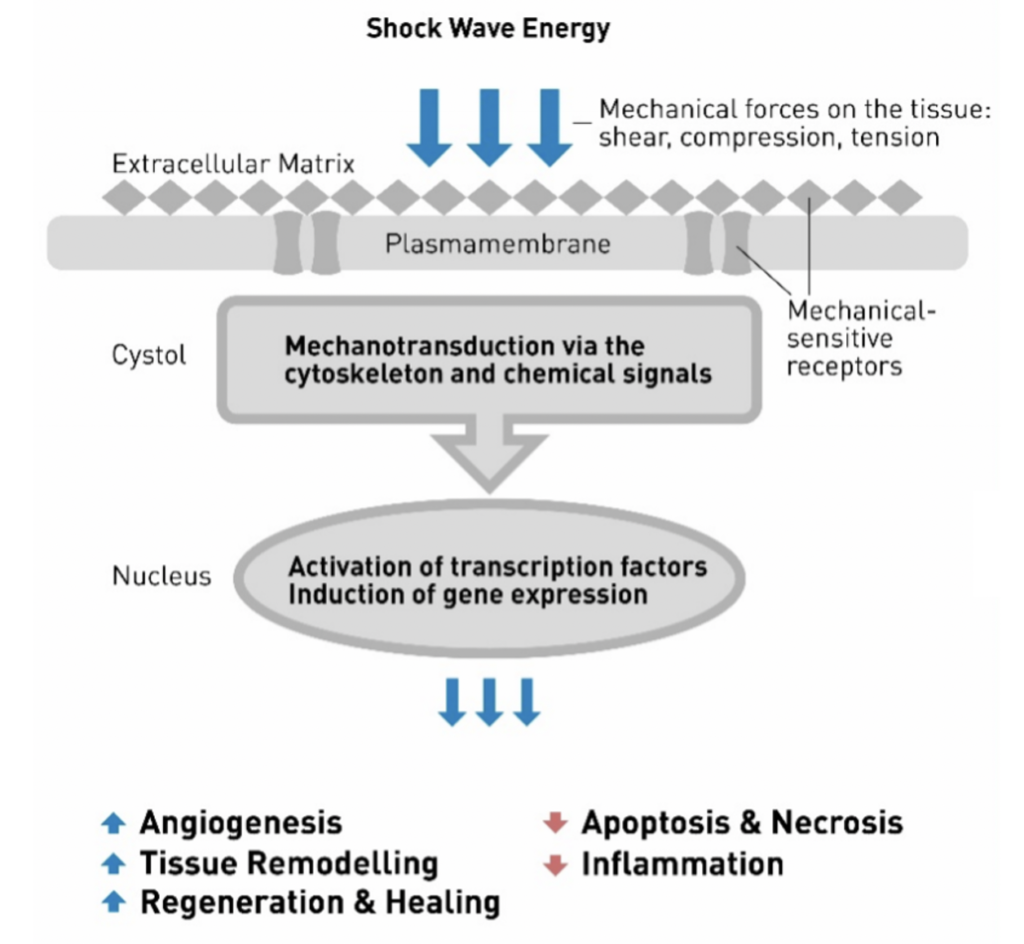
Change at the cellular level to initiate healing
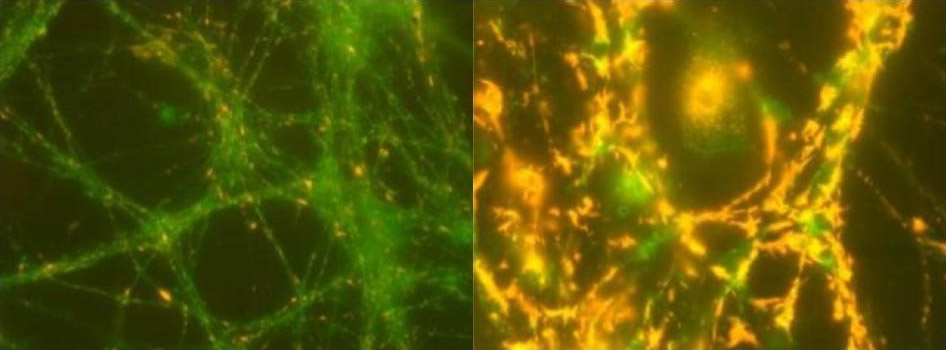
Fluorescent stained mitochondria before and after broad-focused shockwave
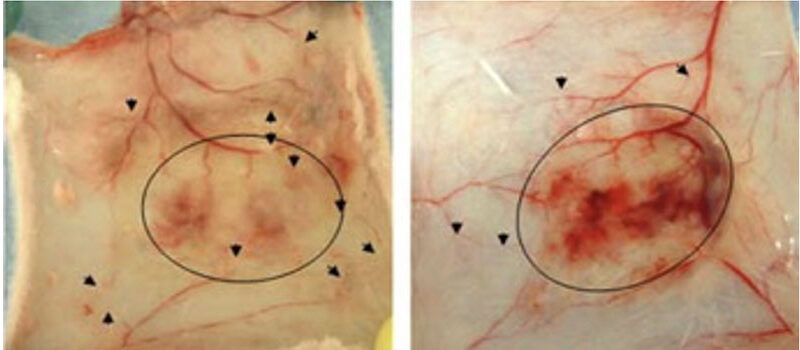
Fluorescent stained mitochondria before and after broad-focused shockwave
TRIGGERING BIOLOGICAL RESPONSES
MUSCULOSKELETAL
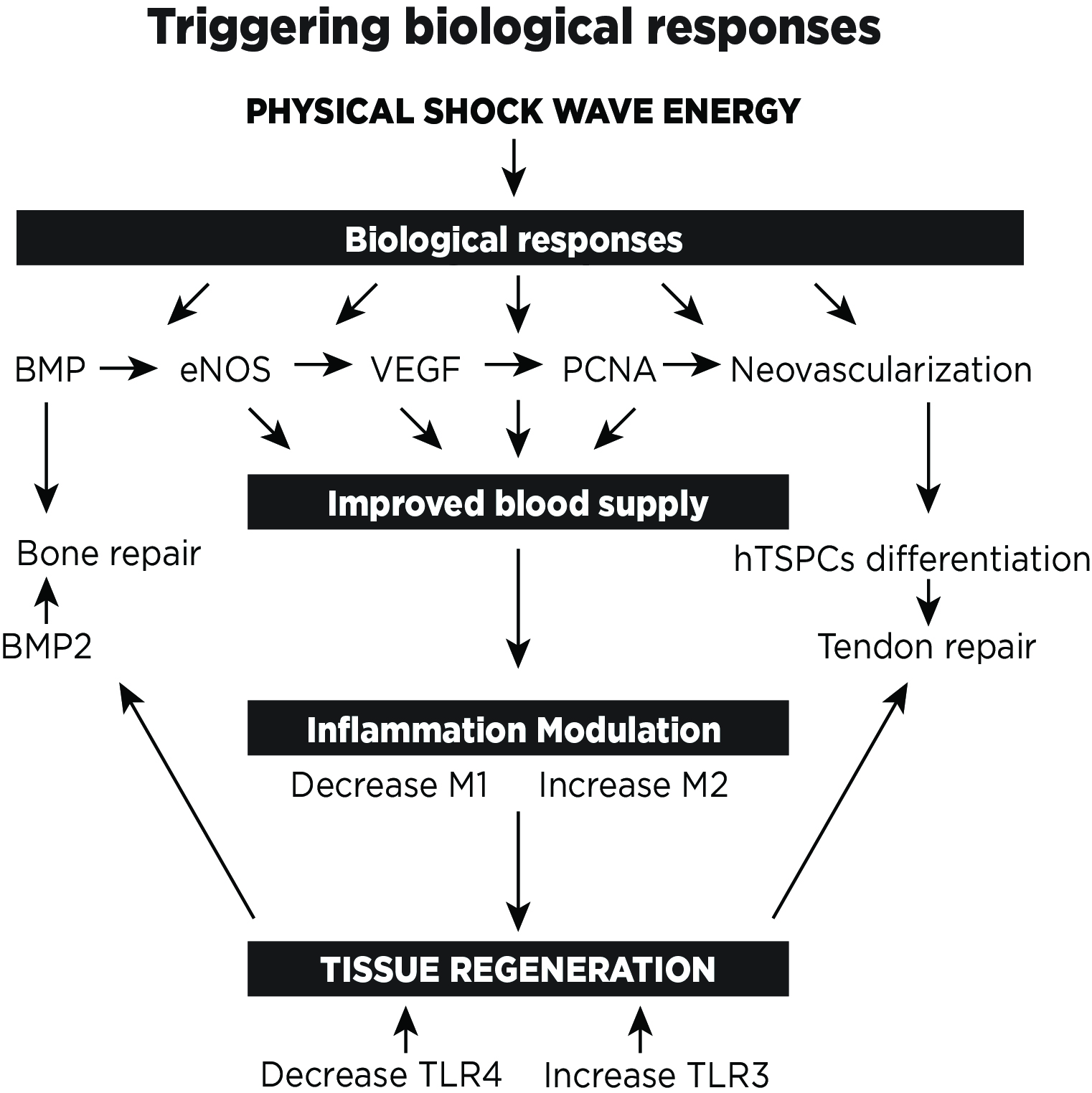
WOUND
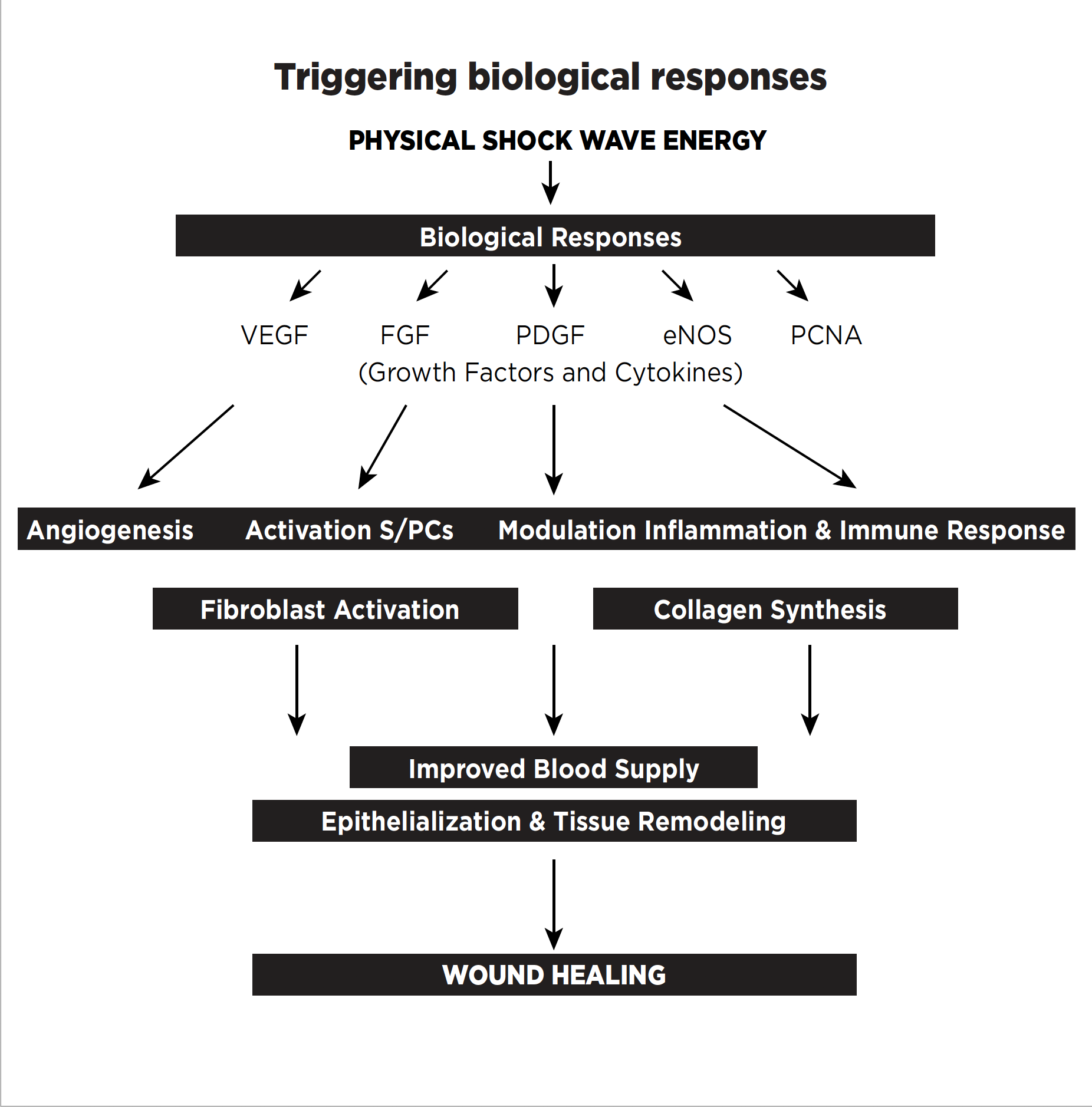
The angiogenic effect of shockwave treatment is probably the most extensively described issue in shockwave science.
The induction of vessel sprouting has been reported in wounds, bone, muscle, heart, and skin.
Tepeköylü C et al, Shockwave treatment induces angiogenesis and mobilizes endogenous CD31/CD34-positive endothelial cells in a hindlimb ischemia model: implications for angiogenesis and vasculogenesis. J Thorac Cardiovasc Surg. 2013 Oct;146(4):971-8.
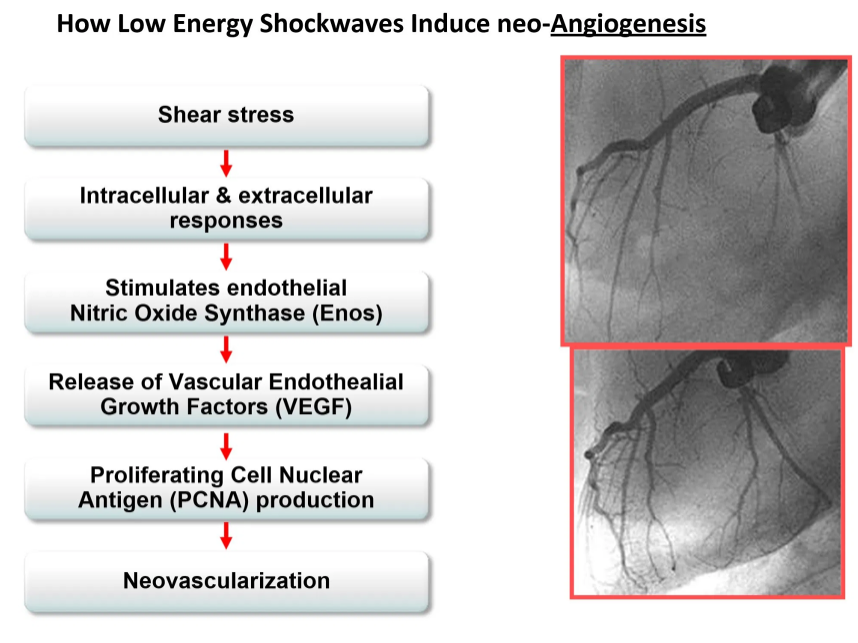
Therapeutic Effects of SoftWave Therapy
- Pain relief – analgesic effect
- Anti-inflammatory action:
- Lowers the pro-inflammatory immune response
- Decreases cellular apoptosis and reduces necrosis
- Antibacterial effect in the treatment of infections
- Induces the expression of endogenous growth factors
- Angiogenesis; improved vascularity and blood circulation, tissue supply
- Ossification; formation of new bone tissue
- Stimulates natural anabolic and growth functions in all kinds of tissues
(skin, bones, cartilage, smooth & striated muscles, nerves…) - Activation of stem cells; metabolism ↑, proliferation ↑, migration ↑, differentiation ↑
- Tissue remodeling and regeneration!
TRIGGERING BIOLOGICAL RESPONSES
There are many names in the marketplace, which are similar in concept but THEY ARE NOT THE SAME.
These include:
- Extra Corporeal Shock Wave Therapy (ESWT)
- Extra Corporeal Pulse Activation Therapy (EPAT)
- Shock Wave Therapy
- Pressure Wave
- Acoustic Wave/Sound Wave
- Acoustic Wave Therapy (AWT)
- Radial Shock Wave Therapy (RSWT)
- Extracorporeal Acoustic Wave Therapy (EAWT)
- Low Intensity Shockwave Therapy (LISWT) (ED)
- Acoustic Pneumatic/Ballistic
- Electromagnetic
- Piezoelectric
- Electrohydraulic
- Focused
- Unfocused/Parallel
- Radial
A true shock wave is characterized by a single, mostly positive pressure pulse followed by a comparatively small tensile wave.
There are 3 types of true shock wave therapies and 1 assumed type that is not a true shock wave therapy
- ELECTROHYDRAULIC – Broad focused/parallel (sometimes thought to be Unfocused)
- ELECTROMAGNETIC – Focused
- PIEZOELECTRIC – Focused
ACOUSTIC PNEUMATIC/RADIAL – Not shock wave
(Radial is a pressure wave NOT a true shock wave according to ISMST – International Society for Medical Shockwave Treatment)
Within shock wave therapy, it can be considered High Intensity and Low Intensity
High Intensity Focused
Lithotripsy : Laser beam, exploding kidney stones
Low Intensity Focused
Wound Healing, delayed non-healing fractures; Laser pointer
Low Intensity Broad Focused
Treats Musculoskeletal, Burns, Wound Healing, as well as pain associated with Erectile Dysfunction, Peyronnie’s disease, Persistent Genital Arousal Disorder, Pelvic Pain, Incontinence, Interstitial Cystitis, and more
QUICK REFERENCES
CLINICAL SUCCESS RATES
Bone pathologies: Success Rate 99%
Rodriguez et al., 2008. 11th ISMST Congress in Juan le Pins, France, Abstract No. 37.
Non-Unions: Success Rate 88.5%
Calcifying Tendonitis of the Shoulder: Success Rate 87.9%
Plantar Fasciitis: Patient Satisfaction 81.5%
Calcific Tendinosis of the Rotator Cuff: Patient Satisfaction 84%
Serrano et al., 2014. 17th ISMST Congress in Milano, Italy Abstract No. 38.
Heel Spurs: Success Rate 76%
Sergej Marx, Richard Thiele, 2007. 10th IMST Congress in Toronto, Abstract No. 63.

